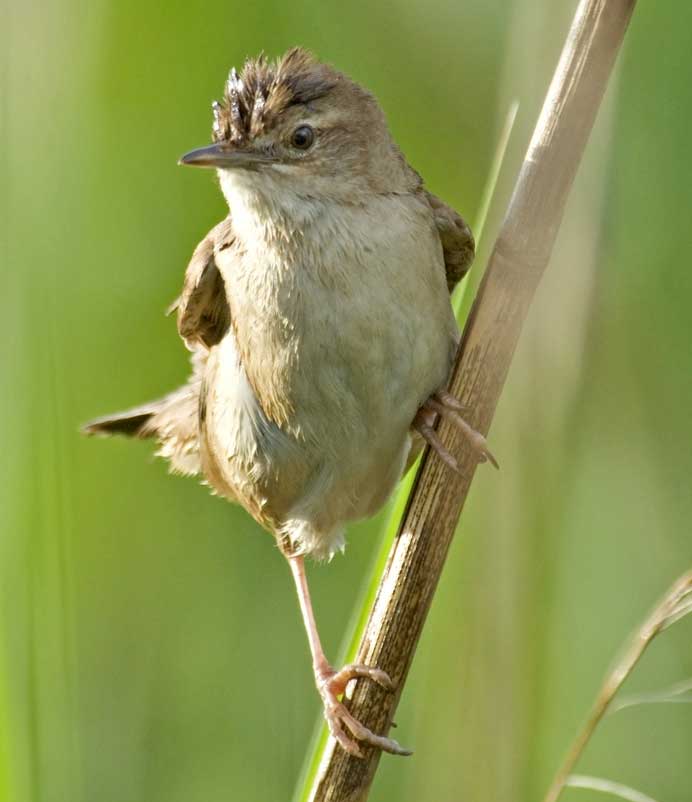Locustella luscinioides (*) Cladus: Eukaryota Name Locustella luscinioides (Savi, 1824) Reference Nuovo Giornale dei Letterati 7 p.341
The Savi's Warbler, Locustella luscinioides, is an Old World warbler in the grass warbler genus Locustella. It breeds in southern Europe into temperate western Asia. It is migratory, wintering in sub-Saharan Africa. This small passerine bird is a species found in reed beds, usually with some bushes. 3-6 eggs are laid in a nest in reeds. It is a medium-sized warbler. The adult has an unstreaked grey-brown back, whitish grey underparts and a concolourous undertail, which is a distinction from River Warbler. The sexes are identical, as with most warblers, but young birds are yellower below. Like most warblers, it is insectivorous. This is not a skulky species, but can be difficult to see in the reeds except sometimes when singing. The song is a monotonous mechanical insect-like reeling, often given at dusk. It is similar to the song of a Grasshopper Warbler, but is faster and deeper. Its song bears a strong resemblance to that of Roesel's Bush-cricket. This bird is named after the Italian ornithologist Paolo Savi. Source: Wikispecies: All text is available under the terms of the GNU Free Documentation License |
|

